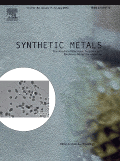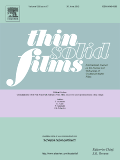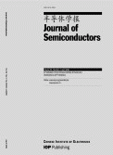
InfoMat
Scope & Guideline
Fostering Collaboration in the World of Materials Science
Introduction
Aims and Scopes
- Advanced Materials Development:
The journal publishes research on the synthesis and characterization of novel materials, particularly those that exhibit unique properties or functionalities, such as two-dimensional materials, nanostructures, and hybrid systems. - Energy Storage and Conversion:
There is a strong emphasis on materials for energy-related applications, including batteries, supercapacitors, and fuel cells, with a focus on improving efficiency, stability, and sustainability in energy storage technologies. - Optoelectronic Applications:
Research exploring the use of materials in optoelectronic devices, including photodetectors, solar cells, and light-emitting devices, is central to the journal, highlighting advancements in performance and novel functionalities. - Sensors and Wearable Technologies:
The journal covers innovative sensor technologies, particularly those that utilize advanced materials for applications in health monitoring, environmental sensing, and smart wearable devices. - Computational Materials Science:
Computational approaches to materials design, including machine learning and informatics, are increasingly featured, aiding in the prediction and optimization of material properties and functionalities. - Interdisciplinary Research:
The journal encourages interdisciplinary studies that combine materials science with fields such as biology, chemistry, and engineering to address complex challenges and develop innovative solutions.
Trending and Emerging
- Self-Powered and Autonomous Systems:
The rise of self-powered devices, particularly those utilizing triboelectric nanogenerators and other energy harvesting technologies, is a key trend, highlighting the shift towards sustainable and autonomous systems. - Artificial Intelligence and Machine Learning in Materials Science:
There is a growing emphasis on the integration of AI and machine learning techniques in materials research, facilitating predictive modeling, optimization of material properties, and accelerated discovery processes. - Flexible and Stretchable Electronics:
Research focusing on flexible and stretchable materials for electronic applications is trending, driven by demands for wearable technologies and advanced consumer electronics that require adaptable materials. - Electrocatalysis and Sustainable Energy Solutions:
The journal is witnessing increased submissions on electrocatalysts for energy conversion processes, particularly water splitting and CO2 reduction, reflecting a strong interest in sustainable energy solutions. - Hybrid and Multifunctional Materials:
There is a notable trend towards the development of hybrid materials that combine multiple functionalities, such as photonic, electronic, and sensing capabilities, to create versatile applications.
Declining or Waning
- Traditional Battery Technologies:
Research related to conventional lithium-ion battery technologies has decreased, possibly due to the growing interest in alternative energy storage solutions such as sodium-ion and other next-generation batteries. - Basic Theoretical Studies:
There seems to be a decline in purely theoretical studies without experimental validation, as the journal increasingly favors practical applications and experimental results that demonstrate real-world relevance. - Low-Dimensional Materials without Functionalization:
Papers focusing solely on the synthesis of low-dimensional materials without discussing their practical applications or enhancements through modifications are becoming less frequent, as the journal prioritizes studies that demonstrate applied significance. - Basic Photonic Materials:
Research on traditional photonic materials that do not incorporate novel properties or innovative applications is declining, with a shift towards more advanced and multifunctional photonic devices.
Similar Journals

eScience
Unlocking the Future of Materials and Renewable EnergyeScience, published by KEAI PUBLISHING LTD, is an innovative open-access journal that has rapidly established itself as a leading platform in the fields of Electrochemistry, Materials Chemistry, and Renewable Energy, Sustainability, and the Environment. Since its inception in 2021, eScience has garnered recognition for its high-quality research, achieving an impressive Q1 ranking in each of its primary categories as of 2023. With a remarkable Scopus ranking—placing it among the top percentile of journals in these disciplines—eScience serves as an essential resource for researchers and practitioners aiming to advance knowledge and application in sustainable practices and materials innovation. As an open-access journal, eScience supports widespread dissemination of vital research, ensuring accessibility for all, which is critical in addressing contemporary global challenges. The journal's commitment to fostering interdisciplinary dialogue and collaboration positions it as a cornerstone for those dedicated to pushing the boundaries of scientific discovery.

Frontiers in Materials
Driving Progress with Open Access Research.Frontiers in Materials, an esteemed journal published by FRONTIERS MEDIA SA, is a leading platform in the field of Materials Science, with a notable impact factor placing it in the Q2 category of its discipline as of 2023. Since its establishment as an Open Access journal in 2014, it has fostered considerable academic exchange, allowing researchers from around the globe to share their innovative findings and insights. Based in Lausanne, Switzerland, this journal not only emphasizes high-quality peer-reviewed articles but also prioritizes rapid dissemination of research, as evidenced by its commendable Scopus ranking of #62 out of 196 in Materials Science (miscellaneous). By consistently striving to bridge the gap between academia and practical applications, Frontiers in Materials serves as an invaluable resource for researchers, professionals, and students seeking to delve into cutting-edge advancements and transformative applications in materials science.

ADVANCED FUNCTIONAL MATERIALS
Advancing Knowledge in Biomaterials and NanotechnologyADVANCED FUNCTIONAL MATERIALS is a leading journal published by WILEY-V C H VERLAG GMBH, prominently recognized in the fields of biomaterials, chemistry, condensed matter physics, and materials science. With an impressive impact factor and a distinguished position in the Q1 quartile across multiple categories including nanoscience and nanotechnology, this journal serves as a vital platform for researchers and professionals committed to innovating in functional materials. Since its inception in 2000, ADVANCED FUNCTIONAL MATERIALS has published high-quality peer-reviewed articles that push the boundaries of materials science, exploring new frontiers in electronic, optical, and magnetic materials. The journal's dedication to open access ensures that its groundbreaking findings are readily available to a global audience, fostering collaboration and knowledge-sharing among scholars and practitioners in the field. For those seeking to stay at the forefront of materials research, ADVANCED FUNCTIONAL MATERIALS is an essential resource.

Advanced Science
Catalyzing Knowledge for a Brighter TomorrowAdvanced Science, published by Wiley, stands as a premier open-access journal since 2014, dedicated to fostering innovative research and insights across multiple disciplines including Biochemistry, Genetics and Molecular Biology, Chemical Engineering, Engineering, Materials Science, Medicine, and Physics and Astronomy. Based in Germany, this journal has quickly established itself in the academic community, receiving high recognition with a Q1 ranking in its respective categories as of 2023. With its impressive Scopus rankings, including #1 in Biochemistry, Genetics and Molecular Biology and #3 in General Engineering, Advanced Science plays a pivotal role in disseminating groundbreaking scientific knowledge to researchers, professionals, and students alike. By embracing an open access model, it ensures that high-quality research is readily available to a global audience, thus facilitating advancements in science and engineering fields.

JOURNAL OF OPTOELECTRONICS AND ADVANCED MATERIALS
Connecting Ideas, Inspiring Innovations in OptoelectronicsJOURNAL OF OPTOELECTRONICS AND ADVANCED MATERIALS, published by the NATL INST OPTOELECTRONICS in Romania, is an esteemed academic journal dedicated to disseminating innovative research in the fields of optoelectronics and advanced materials. With an ISSN of 1454-4164 and E-ISSN 1841-7132, the journal provides a platform for researchers to share their findings and technological advancements from 1999 to 2024. Despite being placed in the Q4 quartile across several categories—including Atomic and Molecular Physics, Condensed Matter Physics, and Electrical and Electronic Engineering—the journal serves as an essential resource for highlighting significant developments in its respective fields. Researchers and professionals may find valuable insights that foster collaboration and inspire further investigation, thereby contributing to the continuous evolution of optoelectronics and materials science.

Advanced Electronic Materials
Driving Progress in Advanced Materials ResearchAdvanced Electronic Materials is an esteemed journal published by Wiley, dedicated to the forefront of materials science, particularly in the areas of electronic, optical, and magnetic materials. With a commendable impact factor that places it in the Q1 quartile of its category and a Scopus rank of 36 out of 284, the journal is a vital resource for researchers, professionals, and students aiming to contribute to this rapidly evolving field. Launched in 2015 and fully transitioned to Open Access in 2023, the journal promotes widespread dissemination of knowledge, ensuring accessibility to groundbreaking research findings. With its address located in Germany at 111 River St, Hoboken 07030-5774, NJ, it serves a global academic community eager to explore innovative materials technologies that influence diverse applications ranging from consumer electronics to advanced manufacturing. As researchers seek to push the boundaries of what is possible with materials, Advanced Electronic Materials stands as a premier platform for sharing, discovering, and advancing knowledge in this essential domain.

SYNTHETIC METALS
Advancing the Future of Materials Science.SYNTHETIC METALS is a leading academic journal published by Elsevier Science SA, focusing on the interdisciplinary field of materials science with an emphasis on the development and application of synthetic metallic materials. Established in 1979, this esteemed journal offers a platform for innovative research that promotes advancements in condensed matter physics, electronic materials, materials chemistry, and mechanical engineering. With an impressive Q1 ranking in Metals and Alloys and Q2 rankings across various other categories, SYNTHETIC METALS serves as a vital resource for researchers, professionals, and students seeking to explore complex material systems and their applications in industry. Although it does not currently offer open access, the journal's impact is highlighted by its robust Scopus rankings, ensuring high visibility and dissemination of meaningful research outcomes. As it progresses through its convergence period to 2024, SYNTHETIC METALS remains dedicated to advancing knowledge and fostering scientific inquiry in the field of materials science.

Thin Solid Films
Charting New Territories in Materials ResearchThin Solid Films, published by ELSEVIER SCIENCE SA, is a highly regarded journal in the fields of materials science and physics, specifically focused on the properties and applications of thin films. Established in 1967, this journal has been a leading platform for disseminating research on surfaces, coatings, and advanced materials. With its consistent publication through the notable HIndex of scholarly impact, this journal showcases a diverse range of studies ranging from electronic, optical, and magnetic materials to novel surface and interface engineering. In recent evaluations, Thin Solid Films has achieved significant rankings, including a Q2 position in Materials Chemistry and Metals and Alloys, reflecting its relevance and importance in ongoing scientific discourse. Although it does not offer open access, it provides a vital resource for researchers, professionals, and students seeking to advance their knowledge and expertise in thin film technology. The journal's commitment to quality and innovation makes it an essential publication for anyone engaged in the field.

JOURNAL OF ELECTRONIC MATERIALS
Connecting Researchers to Groundbreaking Insights in ElectronicsWelcome to the Journal of Electronic Materials, a premier publication in the field of materials science. Published by Springer, this esteemed journal has been a beacon for groundbreaking research in electronic, optical, and magnetic materials since its inception in 1972. As an established resource, it boasts a commendable impact factor and categorically ranks in the second quartile (Q2) in key areas such as Condensed Matter Physics and Electrical and Electronic Engineering, as well as holding a respectable third quartile ranking in fields related to Electronic, Optical, and Magnetic Materials and Materials Chemistry. Researchers, professionals, and students can access a wealth of knowledge as we publish original articles, reviews, and cutting-edge research that push the boundaries of science and technology in these critical fields. Stay informed and engaged as we explore advancements that shape the future of electronic materials.

Journal of Semiconductors
Shaping the future of electronic, optical, and magnetic materials.Journal of Semiconductors, published by IOP Publishing Ltd in the United Kingdom, is a leading scholarly journal that has established itself as a premier platform for disseminating high-quality research in the fields of condensed matter physics, electrical and electronic engineering, and materials chemistry. Since its inception in 2009, the journal has featured research articles that delve into the fundamental and applied aspects of semiconductor technologies, making significant contributions to advancements in electronic, optical, and magnetic materials. The journal boasts an impressive Q1 ranking in several categories, including Condensed Matter Physics and Electronic, Optical and Magnetic Materials, reflecting its influential role in shaping contemporary research. With a dedicated audience of researchers, professionals, and students, it aims to foster collaboration and innovation in this dynamic field. Although it operates under a traditional access model, the journal offers various publication options that ensure the visibility and impact of its articles. Through its rigorous peer-review process and commitment to excellence, the Journal of Semiconductors continues to be an invaluable resource for those seeking to stay at the forefront of semiconductor research and technology.